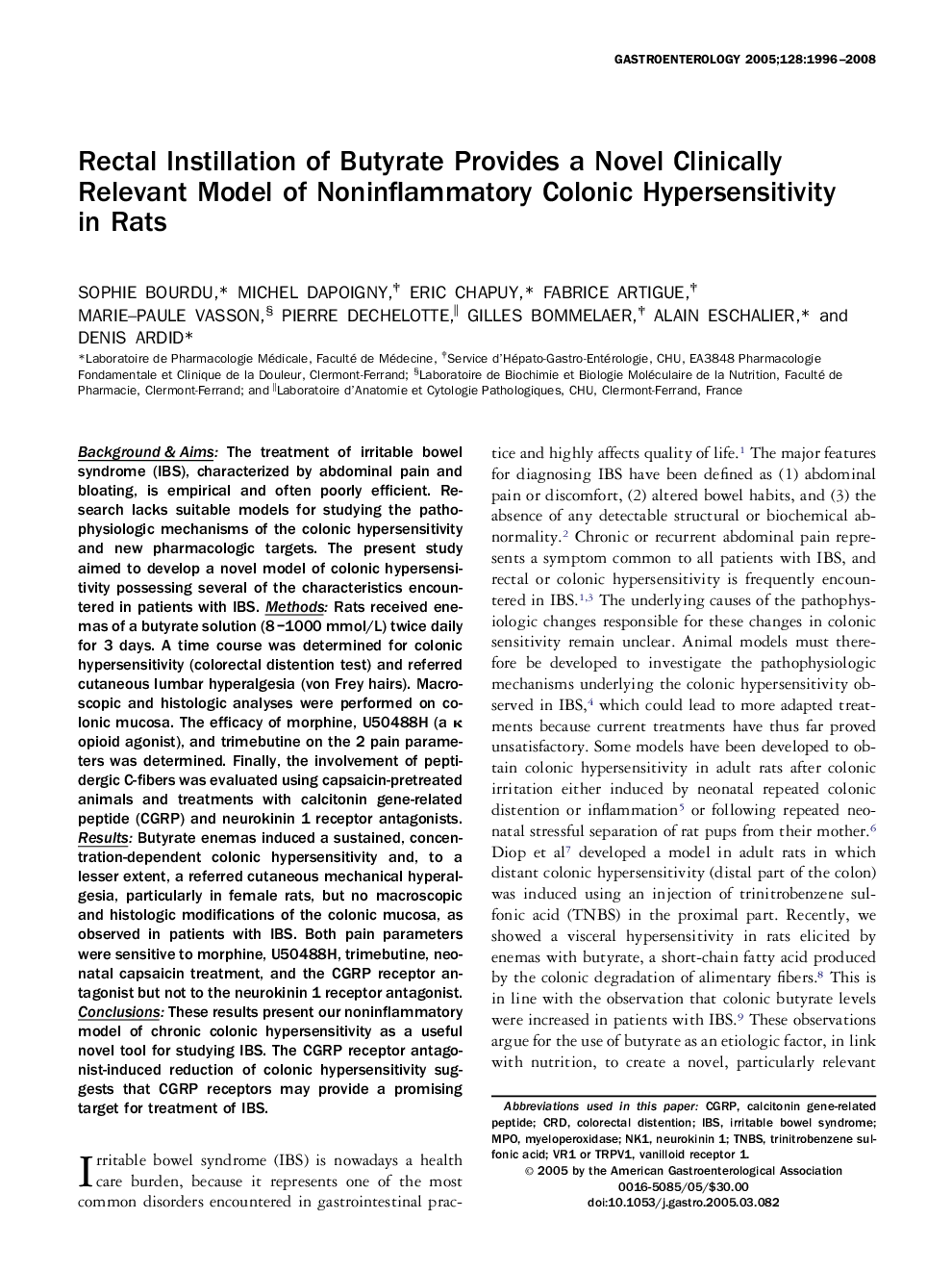| Article ID | Journal | Published Year | Pages | File Type |
|---|---|---|---|---|
| 3299735 | Gastroenterology | 2008 | 13 Pages |
Background & Aims: The treatment of irritable bowel syndrome (IBS), characterized by abdominal pain and bloating, is empirical and often poorly efficient. Research lacks suitable models for studying the pathophysiologic mechanisms of the colonic hypersensitivity and new pharmacologic targets. The present study aimed to develop a novel model of colonic hypersensitivity possessing several of the characteristics encountered in patients with IBS. Methods: Rats received enemas of a butyrate solution (8–1000 mmol/L) twice daily for 3 days. A time course was determined for colonic hypersensitivity (colorectal distention test) and referred cutaneous lumbar hyperalgesia (von Frey hairs). Macroscopic and histologic analyses were performed on colonic mucosa. The efficacy of morphine, U50488H (a κ opioid agonist), and trimebutine on the 2 pain parameters was determined. Finally, the involvement of peptidergic C-fibers was evaluated using capsaicin-pretreated animals and treatments with calcitonin gene-related peptide (CGRP) and neurokinin 1 receptor antagonists. Results: Butyrate enemas induced a sustained, concentration-dependent colonic hypersensitivity and, to a lesser extent, a referred cutaneous mechanical hyperalgesia, particularly in female rats, but no macroscopic and histologic modifications of the colonic mucosa, as observed in patients with IBS. Both pain parameters were sensitive to morphine, U50488H, trimebutine, neonatal capsaicin treatment, and the CGRP receptor antagonist but not to the neurokinin 1 receptor antagonist. Conclusions: These results present our noninflammatory model of chronic colonic hypersensitivity as a useful novel tool for studying IBS. The CGRP receptor antagonist-induced reduction of colonic hypersensitivity suggests that CGRP receptors may provide a promising target for treatment of IBS.
